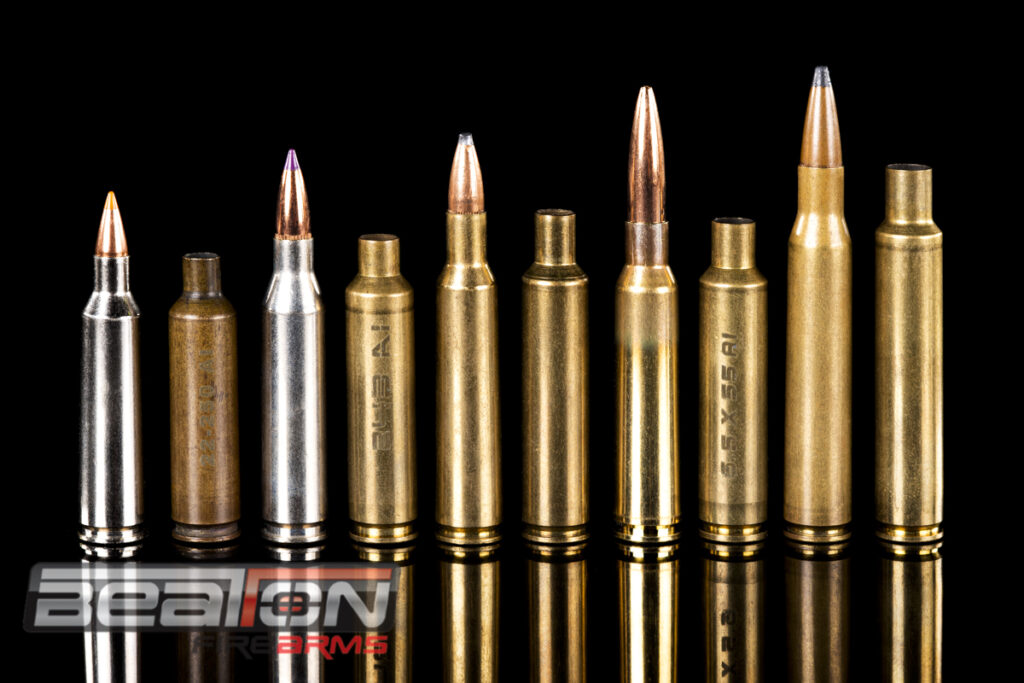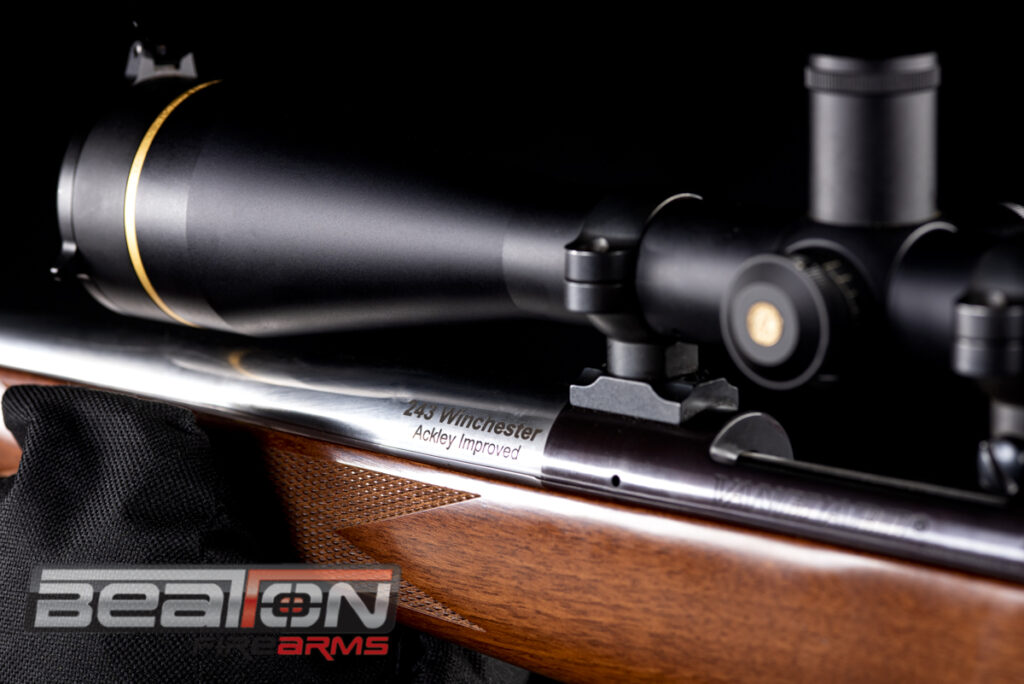Ackley Improved

Left to right: 22-250 Rem & 22-250 AI, .243 Rem & .243 AI, 6mm Rem & 6mm AI, 6.5×55 SE & 6.5×55 AI, .280 Rem & .280 AI
P.O. Ackley was a gunsmith that grew to fame in the early 20th century. Perhaps best known in the firearms industry as a wildcatter, Ackley Improved wildcat chambers are popular modifications.
An Ackley Improved case has straight case walls and a sharp shoulder. This “improvement” increases the case capacity of the parent case and reduces the stretching of the case from firing. The original case is fired in the new Ackley Improved chamber and “fire formed” to the new dimensions. The fire-formed case can then be re-loaded to generate more velocity than the parent cartridge. Because the firearm will safely load and fire the original ammunition even after modification it is not required to re-license the firearm in Western Australia.
The more taper the parent case has the more the volume of the cartridge can be increased by “Ackley Improving” the firearm. For example, 308 Ackley improved does not pose much of an advantage over the 308 Winchester case, but 22-250 Ackley Improved has a big increase in case volume over the 22-250 Remington case.
There are both rimmed and rimless Ackley Improved chambers. 17 Hornet, 30/30 and 303 are examples of rimmed cartridges that case be “ackley”’d very easily. Rimless cases are not so easy. Rimmed cases headspace on the rim, which does not get modified by reaming the chamber out to “Ackley Improved”. Rimless cartridges headspace on the shoulder (specifically, the datum point is the geometric centre of the shoulder) and this moves when the shoulder angle is changed.

Left to right: 22-250 Rem & 22-250 AI, .243 Win & .243 AI, 6.5×55 SE & 6.5×55 AI
To modify a normal rimless chambered firearm to “Ackley Improved” the barrel needs to be set back into the action and the chamber recut. The new chamber will be slightly shorter to the shoulder, meaning a “Go” headspace gauge may not fit and unfired cases may be tight to chamber. This is normal and, in many cases, desirable to maintain long case life (one of the attractions to modifying the chamber in the first place).
There’s no free lunch, however. The straight wall cases do not tend to feed as well as the parent case with tapered walls. If shooting in a timed competition; hunting dangerous game or very populous game where reliable feeding in required, Ackley Improving may not be a good option. But for long range shooters or varmint hunters Ackley Improving can provide an edge many shooters are looking for.
6.5×55 Swedish is one of the best candidates for Ackley Improving in a modern firearm. Because the original cartridge has so much taper on the body there is a significant increase in capacity when the chamber is reamed out. The 6.5×55 Ackley Improved has similar case capacity to the 6.5-284 cartridge but has a longer neck, making it more versatile when using projectiles of different weights.

A recent AI modification to a Beaton Firearms custom Weatherby Vanguard
I dislike Ackley Improving myself. For the meagre increase in velocity which has almost no impact on terminal or external performance you make the gun feed worse; must buy special dies to reload your cases and spend hours forming brass before you even start. Many people with Ackley Improved chambers will claim almost physics-defying increases in performance with minimal increases in powder charge, giving the impression the cartridge is more efficient but forget to mention they are loading their cases to a pressure 20% higher than any factory loaded cartridge.
I have always maintained the idea that if the case you have does not hold enough powder you should just go with a larger case. If you are underwhelmed with the performance of your 30-06 then get a 300 Win Mag. If your 223 does not shoot flat enough for your liking a 223 Ackley Improved is not going to change that – get a 22-250.

A recent AI modification to a Beaton Firearms custom Weatherby Vanguard
However, with the current wait times; uncertainty and cost involved with a license application I can’t blame people wanting to juice up their existing firearms. If Ackley Improving your gun is an attractive option you would like to explore you are welcome to come talk to us about it. I’ve already got an extensive selection of chamber reamers for exactly this purpose.
